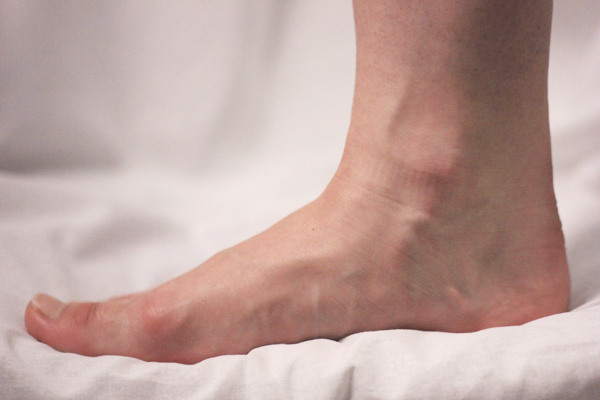Exercising your feet might be better than orthotics
photo credit: Sarah Nolette
Traditionally, people with flat feet are offered orthotics and extra arch support—but studies suggest that this treatment may be detrimental to the natural development of your feet.
Pronation, the slight inward rolling of the foot as weight is transferred from the heel to the toes, is the body’s way of absorbing shock from repetitive impacts with the ground. Without this natural shock absorption, a tremendous amount of stress is placed on the joints of the lower body. Specifically the knee and hip joints, which can result in a multitude of injuries, such as the notorious shin splints and runner’s knee.
If you are an overpronator, your feet pronate an excessive amount when pressure is placed on it. This means that your body’s natural shock absorption is compromised, and your arches are bottoming out with each step you take. You might notice that your shoes always tend to wear out much sooner on the inside of the ankle cuff.
Also, you may have a history of knee pain or knock-knees stemming from the improper inwards tracking of your knee joints. The misalignment of knees and hip joints might even be the cause of lower back pain. If you walk into any athletic retail store, and announce that you are an overpronator, a flock of sales associates will likely point you towards the stability shoe section.
These shoes have an increased arch support designed to resist the overpronation of your feet. Based on the same idea as custom-made orthotics for your feet, these shoes have a denser foam material in the middle of the arch, holding your arch up with every step. But these shoes are not curing your flat feet, said Fred Beaumont of the Institute of Chiropodists and Podiatrists in an interview with the Daily Mail.
Increased arch support, whether it is from orthotics or a stability shoe, may hold your feet in the right position, but they will never teach your feet to hold themselves in the right position. Think of it as a crutch: You can’t learn to walk by yourself if you are always relying on your crutch. Orthotics may help alleviate any pain that is coming from a fallen arch, but to tackle the problem at its root, you might consider another approach. You need to teach the muscles in your feet to hold themselves up.
This can be as simple as doing routine foot exercises while you are at home: lifting your toes as high as you can, stretching your toes wide, calf raises, or simply trying to draw out the alphabet with your toes.
The other thing you can try is minimalist running. This type of running style, made popular in 2009 by Christopher McDougall’s Born to Run, mimics the gait and posture changes associated with barefoot running. Minimalist running shoes have little to no offset—the height difference between the heel of the shoe and the toe—and therefore promote a mid-foot or forefoot strike rather than a heel strike.
This simple change activates a multitude of muscles in the foot and calf that are not normally activated with heel striking, and has been shown over and over to strengthen and increase arch heights in overpronators. If you do decide to try minimalist running, transition gradually. It’s a big change and your calves and feet will be incredibly sore the first few runs. The flat foot has always been a common plight with a single go-to treatment: orthotics.
But there are other approaches to curing flat feet, as long as you take the time and effort to educate yourself on which option will work best for you. Your feet, and your body, will thank you for it.




